Shh, don’t mention Christmas!
As ludicrous as it sounds, there are only 106 days left until Christmas and whilst the sane amongst us are still hanging desperately onto barbeque season and flip flops, the retailers amongst us know that now is the time to get ready for the festive season. The mince pies are in the supermarkets, the incidence of toy adverts on the television is steadily increasing and consumers, whether they know it or not, are being subtly herded towards the bright lights and ringing tills of Christmas shopping.
Now is the time to make sure your website is ready for the approaching season of madness, take stock, decide on any strategies or special offers and make sure your web development company has details of any changes you want to make sooner rather than later. Christmas 2013 is going to be tough for retailers but with a slight upward trend in the amount of consumer spending, for the well-prepared things are looking up. So, what to do to get your website ready?
1. Freshen up.
Have a good check through your content. It is always a good idea to change or add to your website, keeping your content fresh not only gives you Google points, but it keeps your customers interested too. If your site has a featured products section, start adding in your best-sellers or any new ranges. Make sure any photography is professional and shows off your products to their best advantage.
2. Special Offers.
Consider running some seasonal offers. Online purchasers love little extras like free delivery and that can make the difference between them choosing your site and someone else’s for their gifts. Most modern ecommerce systems will allow you to display linked products (customers who bought this also bought that). Alternatively a good old-fashioned BOGOF always goes down a treat.
3. Keep things simple.
Making your website hassle-free is one major way of improving your customer commitment. Look at how smoothly your search function works, and how easy it is for customers to checkout. Keep things simple and give good customer service and people will come back.
4. Don’t go mad on the tinsel.
Although you want to get ready for the festive market, don’t over-do the Christmas vibe. Gradually introduce changes to the site to get ready for the bells and whistles of December, but don’t go for it too early.
If you need to discuss any promotional changes to your website, or would like further information on website design, get in touch with eSterling today. We offer full design and development services to ensure your website is at the heart of your business.
Google’s Smartphone SERPs – Ranking On The Move
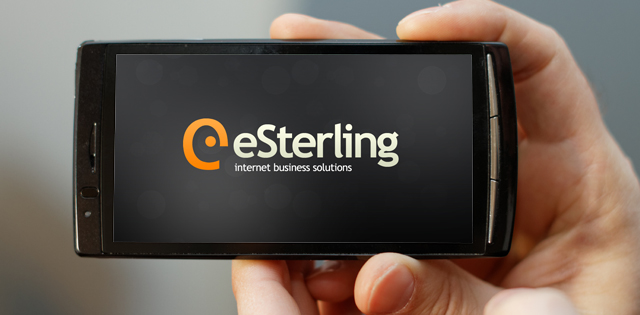
Anyone who pays any attention whatsoever to the world of web design will by now be very familiar with mobile sites and the concept of responsive design (and if you aren’t, you can read more here).
Well, now there’s another reason to perfect your mobile presence – Google have now decided to take the smartphone-friendliness of a website into consideration when determining where a site ranks in its SERPS – meaning if your site can’t strut it’s stuff on the small screen, you could be losing even more traffic than before.
Google have announced in a recent blog post that they are planning to roll out algorithm updates that will penalise websites that are incorrectly configured for mobile browsing.
Here are a few of the most common errors made in mobile sites, and our advice for avoiding them:
Correct Your Redirect
A common strategy for providing a mobile site alongside your desktop website is to use different URLs to serve different pages. This tactic can work very well, as it allows you to lay out the content on your pages in a different format that is better suited for smaller screens and touch-based interaction. However, these redirects must be handled correctly in order to provide a consistent experience for the user with minimal frustration.
A mistake that often crops up with this sort of configuration is directing smartphone users to a set page (most often the home page), no matter which desktop page they are trying to access – requiring extra work from the user in order to navigate back to the page they originally attempted to visit in the first place! Naturally, this can be a source of annoyance for the user, and can result in them leaving your site in search of something less tedious to find their way around.
The solution for this issue is simple – make sure each page redirects to its own respective mobile-friendly page. If the content is not available in mobile form, then directing the user to the home page or other related page is preferable to serving a 404 page – but still not really ideal.
Video Woes
The difficulty that mobile platforms have with video content is well documented, and a topic for lengthy discussion in its own right. However, if you’re serving unplayable video content to your mobile users, pretty soon you can expect to see a drop in your search rankings.
The solution for this problem is (perhaps unsurprisingly) to avoid Flash content on mobile sites in general, as it is unsupported in iOS and Android version 4.1 and higher. To include video content, it is possible to use the new HTML5 markup <video> tag, which should work without a hitch on all mobile platforms.
App-Unhappy
If you also provide a mobile app, it would seem only logical to promote this app to users browsing on a mobile device – and this can seem like a perfectly user-friendly move too, as your app may provide a better interface for your users to interact with similar content. However, advertising your app through interstitials or other methods which disrupt the conventional user experience of your site will soon start to have a negative impact on your site’s rankings, as well as annoying your users.
This doesn’t mean that you can’t try to entice mobile users with your shiny new app – as long as it is done tastefully. Google recommends using a “simple banner” displayed inline, alongside the rest of your website’s content. This can mean either a standard HTML image banner or utilising the support offered by the device’s native browser and operating system – for example Smart App Banners for Safari on iOS6.
More Speed, Less Haste
On top of these new rules concerning content, Google’s head of search spam Matt Cutts has alluded to a site speed penalty for mobile sites, similar to the penalty imposed on slow loading desktop sites. Whilst not much information has been disclosed at the minute, it’s fairly safe to assume that as mobile users are often connected to the internet via low-speed cellular connections, the load time that must be achieved will probably be significantly faster than in the desktop speed test.
As is usually the case with Google’s algorithm updates, these new guidelines will help to make the web a better place – both for webmasters and users themselves. Here at eSterling, we welcome them with open arms, and look forward to the mobile web becoming more user-centric and streamlined.
If you’d like to read more on the issues which may cause your mobile site to lose rankings, Google has helpfully compiled a list of common mistakes in smartphone sites to help you out.
As always, if there’s anything in this post which you wish to discuss or would like some more information on, please leave us a message in the comments or email us here.
I/O, I/O, It’s Off To Work We Go… Google’s I/O Conference 2013
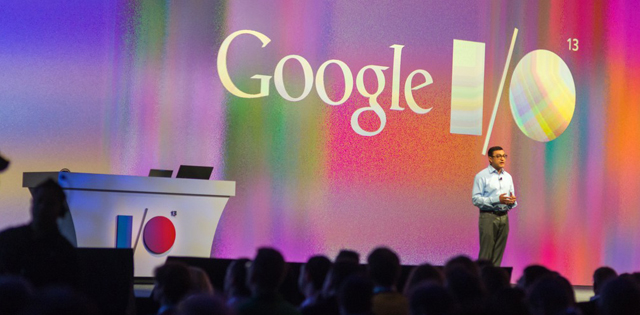
Google’s annual developer conference, I/O (that’s geek-speak for Input/Output, to all you non-techies) went ahead last week. Whilst we weren’t able to fly the team out to San Francisco and we’ve been hard at work preparing for the upcoming Penguin 2.0 update, we have been keeping a keen eye on what went on at the event. Over the weekend we finally got time to sit down and watch the keynote from the event in it’s entirety ( all 3 hours, 51 minutes and 25 seconds of it!) so here’s our run down of the new tech that the Big G has unleashed…
Google Play Music goes Streaming
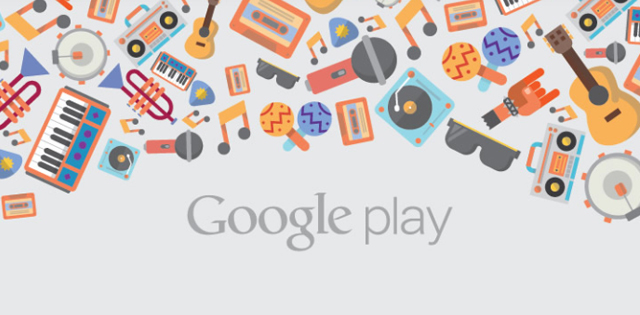
In what looks like an attempt to go head-to-head with services like Spotify, Pandora and Grooveshark, Google Play Music will now offer unlimited streaming music for a monthly subscription fee of $9.99. Dubbed “Google Music All Access”, the new service will offer radio-style streams and smart playlists, but whether this is enough to compete with the existing options in this field remains to be seen.
Maps Updated
One of the most useful Google services, Google Maps has been given a massive update, including a serious design refinement. The new Maps isn’t just a pretty face though – sporting tighter integration with Google’s social services, more emphasis one Street View and 3D, and the ability for users to submit Android “Photo Spheres” enabling people to actually look around the interior of businesses and public places, this is one of the most significant announcements at this year’s I/O. For those planning on going a bit further afield for their next holiday, Google Maps now includes the astounding ability to explore outer space! Don’t throw out your old A-Z atlas just yet though – the new and improved Maps service is currently invite only. Head over to the this page to request an invite.
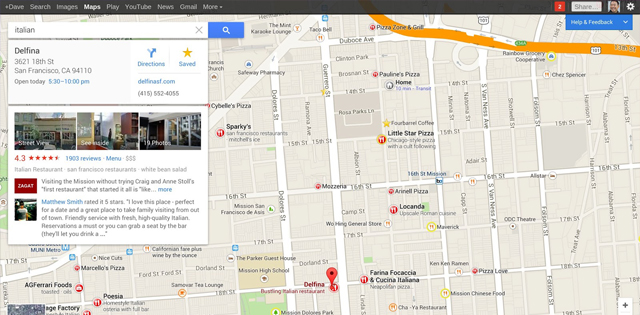
Google Wallet and Gmail Integration
Google Wallet has now been tightly integrated with Gmail to allow you to send money as an email attachment, making sending cash from your Wallet easier than ever. On top of this, Google have released an API that allows developers to streamline the process of paying with your Google Wallet from within apps or online. Whilst Google is keen to stress that they are not abandoning the NFC element of Google Wallet, these new additions could really give the service the boost it needs to take off properly!
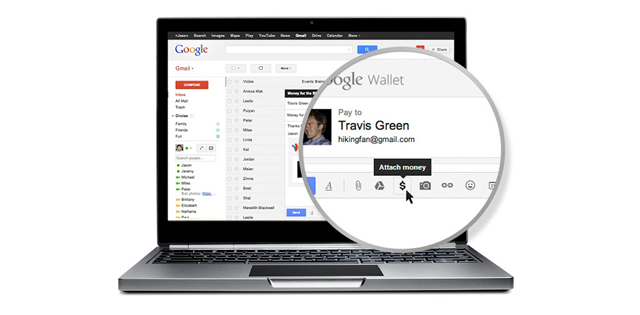
Google Play Gets Games Services
Google Play will provide games developers with the ability to introduce social features such as effortless multiplayer modes, high scores and achievements into their games – a feature that iOS users have been enjoying for a while now. These social features will all be tightly integrated with Google+, so in order to compete with your friends you must be in each other’s Circles. Google says they will also introduce the ability to play a game on one device, then pick up exactly where you left off on another – perfect for swapping between phone and tablet!
Huge updates to Google+
Google’s very own social network – or “social layer” as they prefer to call it – has been treated to no less than 41 updates, not least of all including a swanky new image-led, Pinterest-inspired interface. Tighter integration with other Google services through Google+ Hangouts mean that now all of the Google messaging services can be accessed from one location, offering a seamless transition between your favourite Google communication tools.
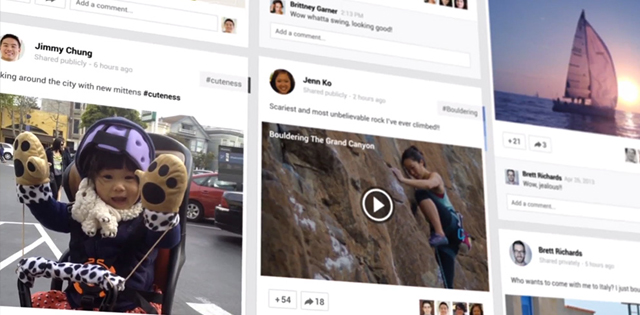
Samsung Galaxy S4 with Stock Android Coming in June
Perhaps the biggest surprise of all from this year’s conference, Google will be shipping a version of the Samsung Galaxy S4 without Samsung’s TouchWiz UI and included apps. Sporting a simpler Android install, this should put the handset in line for early OS updates direct from Google, whilst trimming away the “bloat” in the form of Samsung’s pre-installed software. Unfortunately this variant of the S4 is only scheduled for release in the US at present – hopefully we will see a release on this side of the pond soon!
So that concludes our roundup of the key announcements of this year’s I/O. There’s been a whole host of announcements across the full spectrum of Google’s apps and services, and it looks like it’s going to be another strong year for the Big G. For more information, check out the post on Google’s own blog.
The Penguin Returns: More Google Penguin Updates for 2013
Little more than a year ago, Google introduced what was then one of the biggest updates to its search algorithm. Originally dubbed the “Webspam Update”, it rocked the SERPs, knocking a considerable amount of websites reeling, causing their rankings to drop faster than you can say “p-p-pick up a Penguin”. This was obviously serious news for us here at eSterling, as we pride ourselves in our ability to consistently achieve and maintain good results in Google for our clients using strictly white-hat techniques. However, despite our dedication to good practice in our optimisation work, we still saw the websites of a few clients suffer.
Fast forward 12 months to where we are now, and the Big G is at it again. Matt Cutts (Google’s guru on all things search) announced last Friday that “Penguin 2.0” is on the way. We know a few things about this update – the most important being that it’s coming soon, and it’s going to be big. Big enough to disrupt the SERPs again, probably on a much larger scale than last time. Whilst the guys over at Google like to portray the penguin updates as cute, wide-eyed little penguin characters, here at eSterling we like to think of them as being more similar to Danny Devito as “the Penguin” from Batman Returns:

The Penguin Returns!
But never fear! As always, our SEO team of caped crusaders are here to bring justice to the search engine results pages with our words of wisdom and cutting edge strategies. Here’s our rundown of the information we have gathered so far concerning the new update:
1. It’s Just Around The Corner
In typical Google fashion, we don’t have a date for the implementation of the new update, but head of all things search at Google HQ, Matt Cutts, has helpfully informed us that it will be “sometime in the next few weeks.” Thanks Matt!
2. Advertorials
“Advertorial” creation (or native advertising) is an advertising method which disguises paid adverts and links as part of a site’s content, and passes link juice (and PageRank) on to the site being advertised. Google is clamping down on this, as it is a violation of their “quality guidelines” – attempting to hide the adverts and also passing on link juice to the advertised site. As we already know, Google doesn’t take kindly to paid links of any kind, but Matt Cutts is keen to mention that there is no harm in advertorials or native advertising, provided that the advertorial carries a clear disclaimer and there is no link juice being passed on (i.e. the link has a “nofollow” attribute).
3. Spammy Search Queries
For as long as people have been using SEO techniques to maximise their rankings, there have been certain niches which have been plagued by webspam from SEO practitioners using unscrupulous tactics such as keyword stuffing, doorway sites and hidden links. Some of these niches include “payday loans” and various adult-orientated areas, such as pornography and adult dating sites. Whilst this doesn’t apply to any of our clients, it’s nice to see that the Big G is starting to clamp down on these webspammers, as the advancements that are made in this area are sure to trickle down into the more above-board SERPs, helping to combat webspam across the whole internet.
4. Link Spam
Furthering their efforts to clamp down on webspammers, the new update will see Google once again penalising sites who have built unnatural links portfolios that comprise of paid links, links from sites with the sole intent of manipulating rankings (such as doorway sites) and any other dodgy link building or traffic boosting tactics. Think of this as the real “2.0” part of Penguin – this is basically what the last Penguin update did, but on a larger scale.
5. Rolling Out A System For More Advanced Link Analysis
Penguin 2.0 will introduce a more comprehensive link analysis procedure. Matt mentions this is still in early days, but this could potentially turn the SEO industry on its head if Google makes large changes to their link analysis algorithm.
6. Looking To Improve Communication With Webmasters
This is an almost out of character (albeit very welcome) move from Google: we are told that they will be increasing their efforts to provide useful support and information to webmasters, especially concerning hacked sites. If all goes according to plan, Google will be providing us with a “one-stop shop” to diagnosing hacked sites, providing useful information to webmasters straight from Webmaster Tools.
7. Looking To Reward Authority Sites In Niche Directories
Authority sites (sites which are deemed to be the best source of information in their specific niche) have become an important part of Google’s search algorithm. The new update will introduce new systems to identify these authority sites in a more appropriate way, and make it slightly easier to become an authoritative site if your site is exhibiting the requisite characteristics by “blurring the edges” of what makes a site authoritative.
8. Looking To Minimise “Domain Clusters” In SERPs
“Domain clusters” are a phenomenon of search in which a group of results from the same domain will be “clumped” together on the search results pages. This obviously occupies a considerable chunk of SERP real estate, pushing other domains further down the page. As the domains that tend to create this kind of “cluster” tend to be the big boys of the internet (Amazon, eBay etc), Google’s action to minimize these groups of results is good news for small to medium businesses, as it gives them more of a chance of squeezing into the first few results pages.
Obviously, as we exclusively employ white hat tactics here at eSterling, the majority of our client’s sites should see no negative repercussions from these updates – in fact, you may notice a positive outcome as competitors who have used less legitimate SEO agencies get stung by the update and their rankings drop. However, the inevitable truth is that some sites will be undeservedly penalised, as has happened with previous algorithm updates, but rest assured we will be keeping a close watch on all client’s rankings over the coming months and striving to continue to provide all of our clients with our usual first-rate SEO services.
Click here to see Matt Cutts himself discussing the new Penguin update.
Well, that was a pretty gloomy blog post! In the interest of brightening things up a bit, here’s a little something you can try in Google image search:
1. Go to Google image search
2. Type in “Atari Breakout”
3. Hit search
4. Play the Atari classic “Breakout” with your image search results!
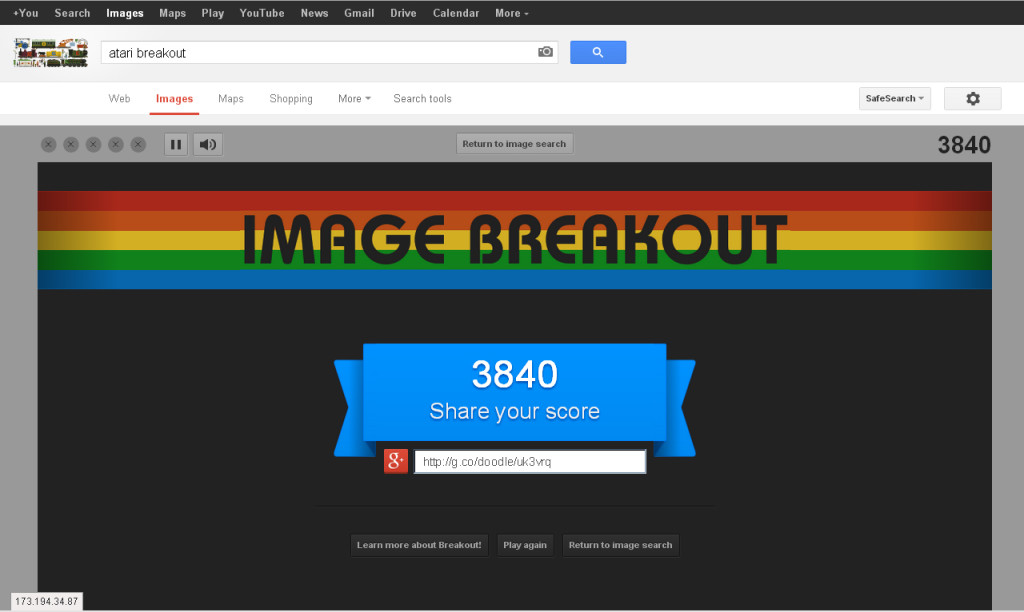
Our Breakout High Score!
See if you can beat our office high score!
Like, Likes and more Likes on Facebook
There are around 400 million potential customers on Facebook, many of whom disclose their interests, share photos, videos and blogs. Marketers advertise where their costumers are and Facebook is definitely home to potential buyers.
Setting up a Facebook business page allows your company to directly interact with potential and existing customers. Facebook provides the opportunity to sell indirectly and generate brand awareness. You can also carry out market research by using polls, analysing discussions and asking relevant questions.
Simply setting up a Facebook page and hoping the world will see it is simply not enough. You need to make an effort to get people to join your Facebook page. Increasing your fan base enhances your network and visibility of your brand which equals more traffic to your website. So the more likes you have the better.
Here are a few tips to triple your likes on Facebook:
Customize your Facebook URL
Your Business page will look more professional and stand out from the rest with a customized URL. Type in – http://facebook.com/username and follow the instructions.
Update your ‘Status’ regularly
When visitors approach your profile the first thing they will notice is your status updates. So it’s important that they stand out. Keep it fresh by adding videos, discussions, competitions, upcoming events and the latest blogs. This needs to be done at least once a day and interact with your fans by asking for their opinion, sharing tips and providing relevant information.
Facebook Groups
Thousands of users join groups to interact with people who have the same interests and to share opinions and information. Joining a relevant group increases your networking ability and setting up your own group allows you to be involved in a shared interest and increases awareness of your company. Being part of a group encourages interaction with your current and potential customers.
Building relationships
Keeping your business page social and interesting will help build relationships and interact with your followers. Remember it’s not about selling your service directly to Facebook users. You need to gain their trust by being helpful, sharing useful information, replying to relevant comments and allowing them to interact with you on a daily basis.
Offer incentives for your fans
Having content on your page that is exclusive for your Facebook fans will urge more people to click the ‘like’ button in order to access content such as exclusive videos and freebies. You can easily do this by using a static html to create a Facebook landing page with a ‘reveal tab’ that contains content that is only available to your fans of your page.
Install a Facebook badge
Having a Facebook badge can link your business page to your Facebook profile. They are better than widgets, as they load faster owing to the fact that they are simply images.
Add a Facebook “Like Button’ on your site
Visitors to your website can like your Facebook page without leaving the site. Simply install the ‘like button’ on your website.
Promote in Newsletters, articles and emails
If you’re into email marketing, then announce your fan page to your customers urging them to join. You can also include a link to your fan page in future emails, articles and newsletters.
Buy Facebook Likes
If you really don’t want to make the effort to increase your likes, you can buy Facebook likes through a few services. As you already know, the first 50 likes are the most difficult to get, so getting a jump start could help increase your fans organically and quickly.
Blog Commenting
Try to comment on as many blogs as possible, this will drive more traffic to your page and you can also include your Facebook fan page within the comments
Run a Targeted Ad Campaign
Use Facebook Ad campaign as a powerful means to promote your page. You can target market according to age, interests, location of people in Facebook.
Get Link from LinkedIn Profile
LinkedIn gives you a great opportunity to place three website links right on your LinkedIn profile. Use this to link to your Facebook page.
For this month only, we are offering Twitter and Facebook set ups for £195– usually £295 + VAT.
This includes: Branded Pages, Friendly Facebook URL, Hootsuite/Tweetdeck integration and a free social media guide.
If you would like further information about Facebook or Twitter please call 0121 766 8087
New Dynamic Infographic from Google – How Search Works
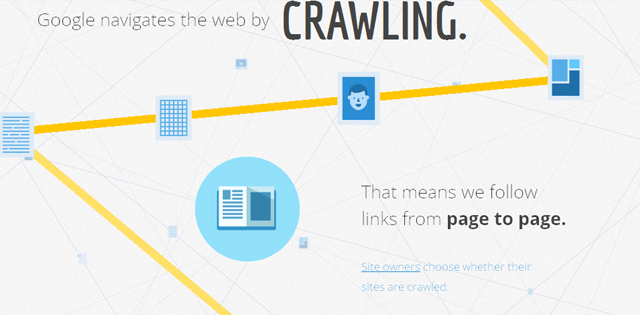
If you’ve ever been curious exactly how Google works, you might have found it a bit difficult to get your head around – which is completely understandable, as it’s not exactly simple being the most powerful search engine in the world!
However, the generous guys at the Big G have taken time out of their hectic schedule to let us know exactly how they do it – in simple terms, of course.
Should businesses be Pinterested?
We’ve all got used to the idea of using social networks such as Facebook and Twitter as a marketing tool. Many marketers have figured out how to spruce up their profiles, participate in discussions and update wall posts effectively.
However- just when we’ve become comfortable with the whole social media phenomenon – out springs Pinterest from nowhere. Can it be used effectively by businesses for marketing purposes? Or is it just an excuse for slackers to gaze at fancy images all day?
Here is a breakdown of the pros and cons of Pinterest to help you decide if it is going to be beneficial to your business.
Why you should be Pinterested!
Pinterest is a social sharing website that allows users to sign up and pin content they’ve found on the web to share with friends and followers. According to ‘ComScore’ it now has over 11.7 million unique users a month making it the fastest site in history to grow beyond the 10 million a month mark. Virtually all content that is popular is imaged based, therefore Pinterest tends to attract businesses that are able to present its product or services through images – such as restaurants, retail stores and product designers.
One of the reasons Pinterest has taken off (and a major reason why certain business sectors are using the site) is that it offers a value proposition that’s unique from other social networks out there. None of the other social networking sites do exactly what Pinterest does. Of course you can share images on Facebook and Twitter but image sharing is not the primary purpose.
It’s also a great place to connect with female users, one study showed as many as 97% of Pinterest fans are female – making this a good potential marketing opportunity for lots of businesses, particularly if your sector has a higher number of female consumers.
Pinterest also makes it very simple to share content on the web. It encourages users to download a pinmarklet (pinterest toolbar bookmarklet) that allows users to pin any content they find on the web that they want to share, it’s that simple! There’s no need for copying and pasting or switching between windows.
The main advantage of using Pinterest is that it’s an image driven site and let’s be honest, people love images far more than they love words. If you analyse Facebook, images and videos are the most shared content on there. If you’re a product based company, sharing images of your products on Pinterest is a great way to control the tremendous power of visuals on a popular site that is committed to sharing images.
Why you should be unPinterested!
Pinterest focuses mainly on visual content which can make it inaccessible (and irrelevant) to some businesses. Most exchanges on Pinterest are concerned with design, lifestyle and fashion and good quality images are a must. If your business does not lend itself to display through a visual means, then there is probably little benefit of you taking this route. Some B2B companies have taken the risk and experimented on Pinterest but it’s important to note there could be a backlash if you’re perceived as a marketing maniac.
Pinterest also has a lack of dedicated brand pages. Other social networking sites such as Google+, Twitter and Facebook have all developed space designed for companies which has helped rid some of the frustration users feel when being bombarded with advertisement. For Pinterest, businesses will need to figure out how to market without seeming like marketing. In other words create visual content that is valid in its own right – not just as a tool to drive traffic to the site.
The most pressing issue Pinterest faces is the images that are copyrighted. They have received a growing backlash from media owners and users over their somewhat ‘laissez-faire’ attitude to copyright. Pinterest’s ‘Terms of Use’ claims that it’s the user who is responsible for making sure there are no copyright or licensing violations so it could be you, the user who would be sued!
The image based site in itself has many flaws when you choose to use it for your business, but on the other hand it’s a free website where you can advertise your business in any way that you want and you are almost guaranteed to have an increase in traffic. So, for product-based businesses with good quality images and stylish products, absolutely – sign yourself up. For service-based businesses I would tend to avoid this site as it could end up doing more damage than good.
Responsive web design – break down those barriers
How often do you use your smart phone or tablet to search the web? If you’re anything like the rest of the population the answer is more than ever before. Figures show that mobile traffic is increasing month on month and data from Microsoft Tag suggests that:
50% of all local searches are performed on mobile devices
What this means for you depends very much on how your website has been built.
For those of you with older websites, the chances are that your site, designed with desktop browsing in mind, is not going to display well on mobile phones or tablet computers. In this convenience-crazy world we have created your dear browsers (who you have invested time and money to get) will not wait around to decipher your messy-looking web site, they will move on to the next one. This means you are potentially missing out on 50% of all search traffic for your product or service.
How to fix it? Instead of having a desktop version and a mobile version of your site, you need to ask you web design agency about responsive design. In this age of flexibility, having one single website that displays equally well on a variety of devices will maximise the potential of your web traffic and remove a potential barrier to them contacting you. Responsive design aims to make your site easily readable without layout or scrolling issues, giving you clarity, usability and style in one handy, flexible package.
There are loads of different ways your website designer can achieve a responsive design, but let them worry about the technicalities, email enquiries@esterling.co.uk to discuss your needs.
Happy Face, sad face: Facebook test out emoticons for status updates
Facebook has begun testing the use of fancy emoticons in status updates on their site. The new development which was originally adopted by the old Myspace allows users to pick symbols to indicate what they’re doing.
On this front, Facebook is playing catch-up as Google+ already supports animated emoticons on their mobile app and Path allows users to ‘smile’ at each other’s posts. So has Facebook come a little late to the party?
The new options include glasses to show someone is watching films or an event, headphones to indicate that they’re listening to music and a fork a knife to inform people when they are eating. As well as emoticons, users can choose from a list of options- such as Watching: ‘Harry Potter’, Feeling: ‘excited’ or can just enter their own text and thus spice up their status messages.
The social networking giant has kept tight-lipped about the feature but has said:
“The new development is an opportunity for people to visually represent what they’re doing and how they’re feeling through their Facebook posts.”
Before Facebook users get too excited, the new feature is only available to a handful of people during this initial testing phase. If these users report that they enjoy sharing their actions in a more visual way, the rest of us could be free to pepper our statuses with a variety of fancy emoticons.
Some critics claim that if the new development does become permanent the information could potentially be used to target people with adverts and therefore turning Facebook into a goldmine.
Advertisers would be able to know users’ likes and dislikes at a much deeper level. For example, if a user put a status about a particular album they’re listening to, it will become easier for advertisers to target them for ads regarding that type of music, particular concerts and promotions.
Facebook could potentially integrate this new status sharing method with Graph Search to load the new search method with additional information. The new status emoticons are being tested on both the web and mobile applications.
Social Media Strategy uncovered: LinkedIn
As part of our series on Social Media for businesses, Sentho Pembleton looks at LinkedIn and its benefits for small, medium and large businesses in the UK.
LinkedIn as a Marketing Tool
Unlike other social media sites, LinkedIn is viewed as an online network of influential people all over the globe. Most of us know, it can be difficult to get an audience with those in a position of leadership – Managing Directors and CEOs are well-protected through normal channels of contact. The advantage of LinkedIn is that it brings business people together in a new and unique way. If utilized properly, even an office junior would be able to engage in discussion and build relationships with company CEOs.
Find Business Partners, Clients and Service Providers
LinkedIn can help most businesses build a network of useful contacts. Just a simple search in your field will reveal thousands of experts, service providers and potential clients. Even if you don’t personally know an individual, you can request to be introduced through a mutual contact or you can send an introductory email.
Recruitment
For recruiters out there, LinkedIn can offer easy access to potential candidates. Businesses can locate a particular candidate that fits their required level of expertise and contact them directly. Companies can also post a job ad for a monthly fee dependant on the location.
Expert Advice
This business networking site offers a unique tool called LinkedIn Answer. It aims to facilitate information and idea sharing online. The service allows you to post business questions to both your network and the rest of the LinkedIn community. LinkedIn has always been used for knowledge sharing. Users have always been able to communicate through their mailbox to pose questions to connections.
Promote your blog
LinkedIn is a great way to share and promote a business blog. Users have the opportunity to add a blog or website to their individual profile in order to give it more exposure.
Recommendations
The recommendation feature can also be used as a business tool. Once you’ve added a product or service to your business profile, you can request recommendations from your customers. In doing this it will boost your company’s credibility and help you gain new clients.
LinkedIn and SEO
LinkedIn enables you to make your profile information available for search engines to index. LinkedIn profiles do receive a high page rank in Google and this is great way to influence what people see when they search for your business. In addition it now gives users the ability to share content. This activity will influence your search engine ranking positions.
LinkedIn Groups
More companies are now taking advantage of this feature for their businesses to network and grow. You can even add your website link in the group profile for great visibility. Sending weekly messages to your group can maintain interest and enthusiasm too. To make the most of your group, you need to find a niche/area business that is under- represented and aim to be the authority of the subject. The more quality content you produce to back this up and the more effectively you run your group, the greater the support you will get from your community and the more likely you are to appear as an authority in your niche fields.
Advertising
LinkedIn has over 120 million users worldwide and has extensive targeting capabilities to entice advertisers. The business network has followed Facebook’s example and introduced a ‘self service’ system ‘LinkedIn Ads’. This provides an opportunity for all LinkedIn users to advertise on a cost per click or impression basis. Advertisement can be tailored by job title and function, industry and company size, seniority, age, gender or certain LinkedIn groups.
For advice on setting up a LinkedIn profile or any other aspect of Social Media strategy, please contact eSterling on 0121 766 8087 or email to enquiries@esterling.co.uk



